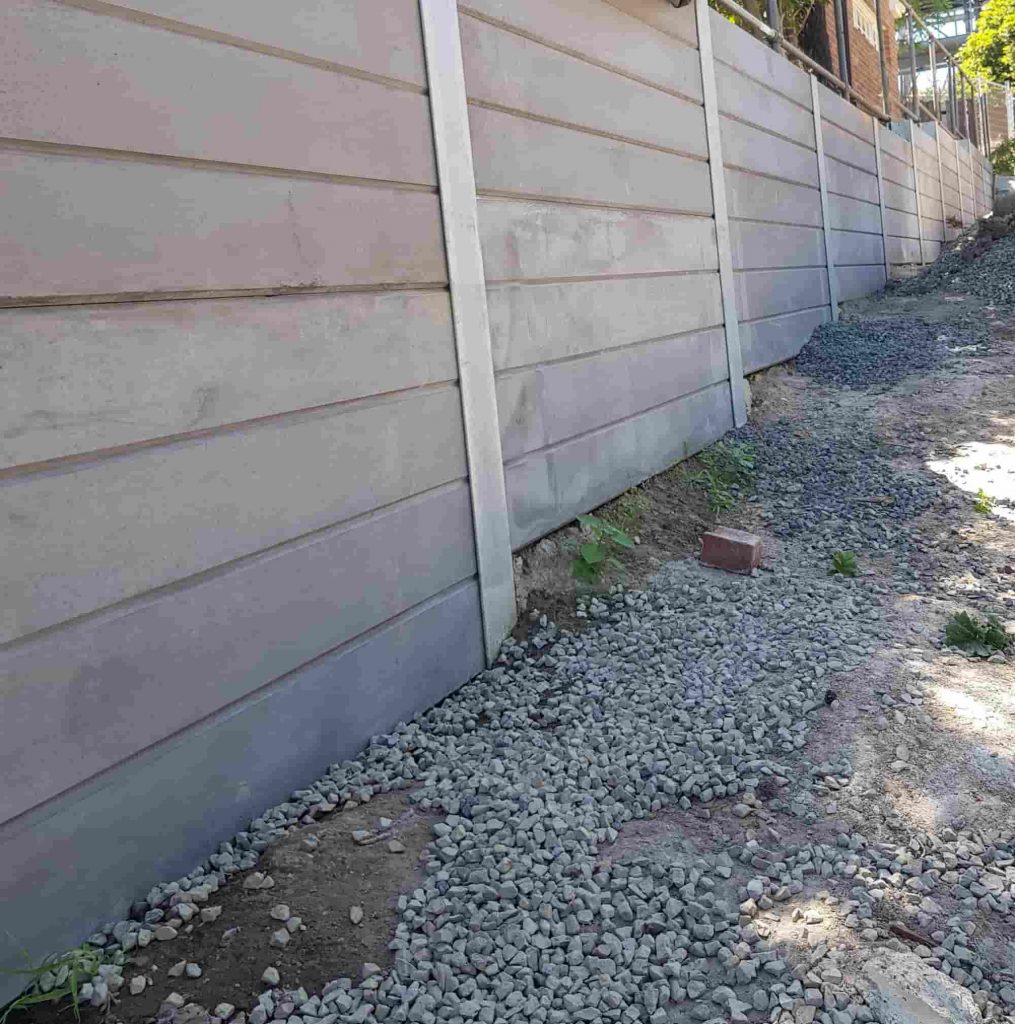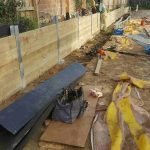Introduction
Building a retaining wall is no little feat. It involves mindful planning, expert execution, and most notably, the right products. With various options available, understanding the choices can empower house owners and contractors alike to make educated decisions. This post dives deep into the remarkable world of maintaining wall products, exploring what keeping wall contractors utilize to guarantee toughness, performance, and visual appeal.
What Are Retaining Walls?
Retaining walls are structures designed to keep back soil or rock from a building or location. They are essential in places with substantial elevation modifications, providing stability and avoiding disintegration. The choice of material can considerably affect the wall's structural stability, lifespan, and look.
Why Choose the Right Material for Keeping Walls?
1. Structural Integrity
The main function of a keeping wall is to withstand lateral pressure from soil. Choosing a robust material guarantees that your wall will stand up to these forces with time without drooping or collapsing.
2. Visual Appeal
A sound retaining wall can improve the visual landscape of your residential or commercial property. Picking appealing materials enables house owners to produce a smooth blend between nature and construction.
3. Cost-Effectiveness
Different products include differing price tags. While some may have greater initial costs, they could save money in the long run due to their durability.
4. Maintenance Requirements
Some products require more upkeep than others. Comprehending these requirements helps house owners select sensibly based on their way of life and determination to invest time in maintenance.
Exploring Different Products Used by Maintaining Wall Contractors
When it concerns building keeping walls, specialists usually work with a number of materials. Each has its special properties that accommodate different needs.
1. Concrete Sleepers: Strength Satisfies Versatility
Concrete sleepers are pre-cast concrete blocks that act as an exceptional option for retaining walls due to their strength and durability.
- Durability: Concrete sleepers hold up against extreme weather conditions and do not rot or warp. Versatility: Available in different sizes and colors, they can suit any landscape design. Cost: While they may be more expensive in advance compared to wood alternatives, their durability often validates the investment.
Advantages of Concrete Sleepers:
- High resistance versus pests Low maintenance requirements Excellent aesthetic possibilities
Disadvantages:
- Heavier than other materials Requires competent installation
2. H Beam: The Backbone of Keeping Walls
H beams are structural steel parts often utilized in construction due to their unparalleled strength.


- Strength: H beams supply tremendous assistance for taller walls where soil pressure is significant. Longevity: Steel does not decay like wood; it can last decades with correct treatment versus rust.
Advantages of H Beams:
- Exceptional load-bearing capacity Ideal for large-scale projects
Disadvantages:
- Higher expense compared to other materials Requires expert installation
3. Wood Sleepers: The Standard Choice
Wooden sleepers bring a natural look that blends effortlessly with outside settings.
- Aesthetics: Wood sleepers provide warmth and charm that's difficult to duplicate with concrete or stone.
Advantages:
- Eco-friendly option if sourced sustainably Easier setup process
Disadvantages:
- Susceptible to rot and pest damage Shorter lifespan compared to other materials
4. Wood Sleepers: A Sustainable Alternative
Similar to wood sleepers however typically dealt with for increased durability, wood sleepers are popular amongst eco-conscious builders.
Benefits of Timber Sleepers:
Natural look enhances landscaping. Treated timber lasts longer than untreated wood. Generally more economical than concrete options.However:
Susceptible to moisture-related issues if not maintained properly. Requires regular treatment for bug resistance.5. Stone: A Traditional Material for Ageless Beauty
Stone has actually been utilized for millennia in building due to its amazing sturdiness and ageless beauty.
Types of Stone Utilized:
|Type|Description|Pros|Cons|| ------------|---------------------|---------------------------|---------------------------|| Granite|Tough igneous rock|Exceptionally durable|Heavy & & difficult to work|| Limestone|Sedimentary rock|Easy to carve|Less durable than granite|| Fieldstone|Naturally found stone|Special visual appeals|Can be irregularly shaped|
Advantages of Utilizing Stone:
Long-lasting & & resistant versus elements. Unique appearance improves residential or commercial property value.Disadvantages:
Expensive product option. Requires knowledgeable labor for installation.6. Modular Block Systems: Modern Solutions for Keeping Walls
Modular block systems include interlocking blocks that produce stable walls without extra mortar or adhesives.
Key Features:
Ease of Setup: do it yourself lovers appreciate the simple assembly process. Variety of Styles: Available in several colors and textures supplying adequate style flexibility.Pros & & Cons:
|Pros|Cons|| ---------------------------|-----------------------------|| Quick setup|Might not be as robust as stones|| Budget-friendly|Limited height assistance|
7. Gabion Walls: The Eco-Friendly Option
Gabions include wire mesh cages filled with rocks or stones creating a sustainable service that looks excellent while serving its purpose effectively.
Why Choose Gabion Walls?
Environmentally Friendly: Uses natural products decreasing carbon footprint. Drainage Residences: Enables water drainage decreasing pressure accumulation behind walls. Cost-Efficient: Frequently less expensive than traditional methods when using local stones.FAQs About Maintaining Wall Materials
Q1: What kind of product is best for a keeping wall?
A1: The very best product depends upon factors such as area, spending plan, aesthetic choices, and meant use; however, concrete sleepers are extensively regarded as versatile choices due to their strength and durability.
Q2: The length of time do wood retaining walls last?
A2: Wooden maintaining walls normally last in between 10-- 20 years depending on maintenance practices; dealt with lumber may extend this life-span considerably but needs routine assessments for rot or insect damage.
Q3: Are stone retaining walls worth the investment?
A3: Yes! Although they come at a higher preliminary expense, stone walls include considerable worth through their long lasting resilience and timeless visual appeals-- typically ending up being centerpieces in landscaping designs!
Q4: Just how much does it cost per foot for concrete sleeper walls?
A4: Expenses differ widely based upon area however generally range from $15--$30 per direct foot including both product and labor expenses-- with prospective variations based on site conditions (e.g., soil type).
Q5: Can I install my own modular block system?
A5: Definitely! Modular block systems are designed for simple assembly making them appropriate for do it yourself tasks; nevertheless, correct preparation is crucial prior-- consider employing professionals if not sure about structural integrity!
Q6: Will gabion walls hold up during heavy rain?
A6: Yes! Gabion walls stand out at managing water flow due mainly because they allow drainage through spaces-- guaranteeing stability even during adverse weather condition conditions!
Conclusion
Choosing the best material is paramount when constructing a keeping wall; each alternative presents distinct advantages tailored towards specific requirements whether it's strength-based needs or aesthetic choices! Consulting with a seasoned retaining wall contractor guarantees you get the best guidance fit particularly towards your job requirements while also adhering closely towards budget constraints!
In summary-- whether you go with long lasting concrete sleepers, standard wooden sleepers, strong H beams, elegant stone, ingenious modular blocks, and even environmentally friendly gabions-- https://tuffstuffretainingwalls.com.au/ completion outcome need to be both functional yet aesthetically enticing allowing you higher peace-of-mind understanding your project stands strong against time!